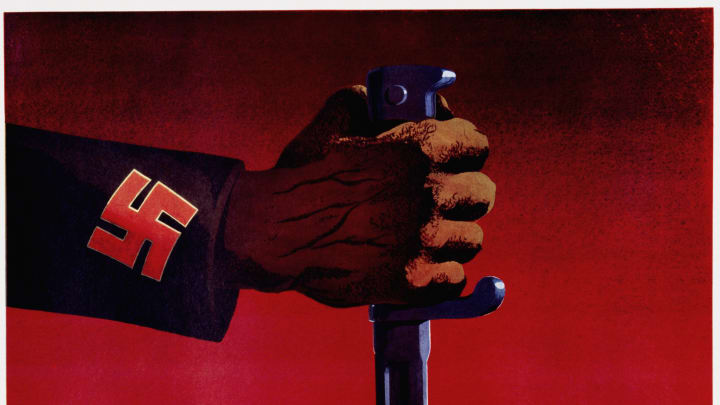The Role of Propaganda in Nazi Germany

The rise of the Nazi Party in the early 1930s was marked by the strategic use of propaganda to gain political support and legitimize its ideology. Joseph Goebbels, appointed as the Minister of Propaganda and Public Enlightenment in 1933, was the chief architect of the Nazi propaganda machine. Goebbels understood the power of media and communication in shaping public perception and used his position to control and manipulate information.
One of the primary goals of Nazi propaganda was to promote the ideology of racial superiority and anti-Semitism. The Nazis propagated the belief in the superiority of the "Aryan" race and portrayed Jews as the primary enemies of the German people. Anti-Semitic propaganda depicted Jews as subhuman, corrupt, and responsible for Germany's economic and social problems. This dehumanization of Jews laid the groundwork for the widespread acceptance of discriminatory laws and the eventual implementation of the Holocaust.
Propaganda was also used to create a cult of personality around Adolf Hitler. The Führer was portrayed as a charismatic and visionary leader who embodied the will of the German people and could restore Germany to greatness. Rallies, speeches, and mass demonstrations were orchestrated to showcase Hitler's leadership and reinforce his image as the savior of the nation. The use of symbols, such as the swastika, and slogans, such as "Ein Volk, ein Reich, ein Führer" (One People, One Empire, One Leader), further solidified Hitler's authority and the unity of the Nazi state.
The Nazi regime employed propaganda to mobilize the German population for war and garner support for its expansionist policies. The invasion of Poland in 1939 and the subsequent outbreak of World War II were justified through propaganda that portrayed Germany as a victim of international aggression and a defender of European civilization against Bolshevism and Western decadence. The portrayal of the war as a noble and necessary struggle helped to maintain public morale and support for the war effort, even as the conflict dragged on and the human cost mounted.
Propaganda was not limited to media and public events but also permeated education and youth organizations. The Nazi regime sought to indoctrinate children and young people with its ideology through the curriculum in schools and membership in organizations such as the Hitler Youth. Textbooks and educational materials were designed to instill loyalty to the Führer, racial purity, and militarism. The aim was to create a generation of loyal and obedient citizens who would perpetuate the Nazi ideology.
The effectiveness of Nazi propaganda was facilitated by the regime's control over the media and the suppression of dissent. Independent newspapers, radio stations, and other forms of communication were either shut down or brought under state control. The Gestapo and other security agencies monitored and censored any opposition to the regime, ensuring that the Nazi narrative remained unchallenged.
The impact of Nazi propaganda extended beyond Germany's borders. The regime used propaganda to influence foreign opinion and garner support from sympathetic groups abroad. Films, broadcasts, and publications were produced in multiple languages to spread Nazi ideology and discredit the enemies of the regime. The propaganda efforts aimed at foreign audiences were part of the broader strategy to gain geopolitical advantages and create a favorable international environment for Nazi expansionism.
In conclusion, propaganda played a crucial role in Nazi Germany, serving as a powerful tool for promoting the Nazi ideology, manipulating public opinion, and consolidating Hitler's control over the state. The regime's systematic and pervasive use of propaganda facilitated the acceptance of its policies, including anti-Semitism, militarism, and totalitarianism. The legacy of Nazi propaganda serves as a stark reminder of the dangers of unchecked state control over information and the manipulation of public perception.